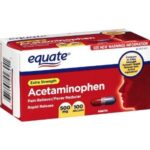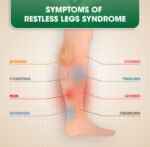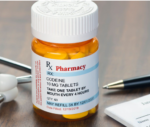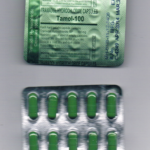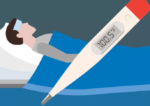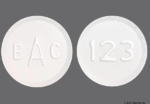The label may not spell out the whole word or may have an abbreviation, such as “APAP, AC, Acetaminophn, Acetaminoph, Acetaminop, Acetamin or Acetam”.
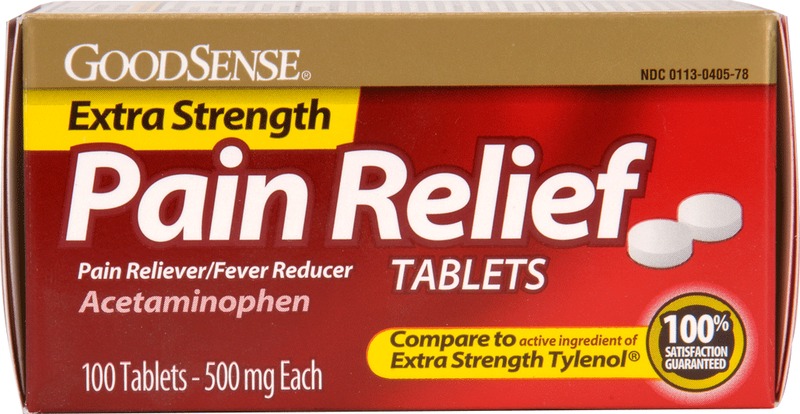
What you Should Know About Acetaminophen:
1. Common Pain and Fever Reliever: Acetaminophen is a widely used over-the-counter (OTC) medication primarily known for its pain-relieving (analgesic) and fever-reducing (antipyretic) properties. It is commonly found in various brand-name and generic medications. Acetaminophen is a widely used drug ingredient found in more than 600 different over-the-counter (OTC) and prescription (Rx) medications. These encompass pain relievers, fever reducers, sleep aids, as well as cough, cold, and allergy medicines.
2. Different Brand Names: Acetaminophen is the generic name, but it is also sold under various brand names, with Tylenol being one of the most recognizable.
3. Safe and Effective: When used as directed, acetaminophen is considered safe and effective for managing pain and reducing fever. It’s a preferred choice for many individuals due to its generally mild side effects and lower risk of causing stomach irritation compared to non-steroidal anti-inflammatory drugs (NSAIDs) like ibuprofen.
4. Maximum Daily Dosage: There is a maximum recommended daily dosage for acetaminophen, typically set at 4,000 milligrams (mg) per day for adults. It’s crucial not to exceed this limit, as doing so can lead to serious health issues, particularly liver damage.
5. Presence in Multiple Medications: Acetaminophen is a common ingredient in numerous OTC and prescription medications, including pain relievers, cough and cold medicines, sleep aids, and more. It’s important to check the labels of all medications you take to avoid unintentional overdosing.
6. Potential Side Effects: While acetaminophen is generally well-tolerated, taking excessive doses can lead to severe liver damage. Some individuals may experience allergic reactions or skin rashes. If you notice any unusual symptoms, it’s essential to seek medical attention promptly.
7. Special Considerations: People with certain medical conditions, such as liver disease, and those who consume alcohol regularly should exercise caution when using acetaminophen. It’s advisable to consult with a healthcare provider in such cases.
8. Interactions with Other Medications: Acetaminophen can interact with other medications you may be taking. It’s important to inform your healthcare provider or pharmacist about all the medications and supplements you use to avoid potential drug interactions.
9. Overdose Concern: Accidental acetaminophen overdose is a significant concern. If you suspect an overdose or experience symptoms like nausea, vomiting, loss of appetite, confusion, or unusual tiredness, seek immediate medical attention.
10. Safe Storage: Keep acetaminophen and all medications out of reach of children, in a cool, dry place, and in their original packaging to avoid confusion.
In summary, acetaminophen is a common and effective pain and fever reliever, but it must be used responsibly, following recommended dosages, and with awareness of its presence in multiple medications to prevent overdose and associated health risks. Always read labels and consult with a healthcare professional if you have questions or concerns.
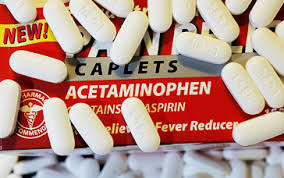
Too Much Acetaminophen
According to the U.S. Food and Drug Administration (FDA), taking too much acetaminophen can damage your liver. The recommended maximum daily dose is 4,000 milligrams (mg) per day for adults. However, the difference between a safe dose of acetaminophen and one that may harm the liver is very small. McNeil Consumer Healthcare (the maker of Tylenol) lowered their recommended maximum daily dose to 3,000 mg. Many pharmacists and healthcare providers agree with this recommendation.
Other factors add to the risk of liver damage when taking acetaminophen. For example, the chance of liver damage is greater if you already have liver problems, if you drink three or more alcoholic beverages a day, or if you take warfarin.
In severe cases, an overdose of acetaminophen can cause liver failure or death.
| 1-14-2014: This list was accurate at the time this Drug Safety Communication was published on 1-13-2011; however, it is no longer accurate. FDA intends to publish a new list once the withdrawals currently in process of combination drug products containing more than 325 mg acetaminophen per dosage unit are finalized. |
|---|
| Brand Name | Generic Name | Dosage Form | Strength |
|---|---|---|---|
| No Current Brand Name | Acetaminophen; Aspirin; Codeine Phosphate | Capsule; Oral | 150mg; 180mg; 30mg |
| No Current Brand Name | Acetaminophen; Caffeine; Dihydrocodeine Bitartrate | Capsule; Oral | 356.4mg; 30mg; 16mg |
| No Current Brand Name | Acetaminophen; Caffeine; Dihydrocodeine Bitartrate | Tablet; Oral | 712.8mg; 60mg; 32mg |
| No Current Brand Name | Acetaminophen; Codeine Phosphate | Solution; Oral | 120mg/ 5mL; 12mg/ 5mL |
| No Current Brand Name | Acetaminophen; Codeine Phosphate | Tablet; Oral | 300mg; 15mg |
| No Current Brand Name | Acetaminophen; Codeine Phosphate | Tablet; Oral | 650mg; 30mg |
| No Current Brand Name | Acetaminophen; Codeine Phosphate | Tablet; Oral | 650mg; 60mg |
| Capital and Codeine | Acetaminophen; Codeine Phosphate | Suspension; Oral | 120mg/ 5mL; 12mg/ 5mL |
| Tylenol W/ Codeine No. 3 | Acetaminophen; Codeine Phosphate | Tablet; Oral | 300mg; 30mg |
| Tylenol W/ Codeine No. 4 | Acetaminophen; Codeine Phosphate | Tablet; Oral | 300mg; 60mg |
| No Current Brand Name | Acetaminophen; Butalbital; Caffeine | Tablet; Oral | 500mg; 50mg; 40mg |
| Esgic-Plus | Acetaminophen; Butalbital; Caffeine | Tablet; Oral | 500mg; 50mg; 40mg |
| No Current Brand Name | Acetaminophen; Butalbital; Caffeine | Capsule; Oral | 500mg; 50mg; 40mg |
| Esgic-Plus | Acetaminophen; Butalbital; Caffeine | Capsule; Oral | 500mg; 50mg; 40mg |
| No Current Brand Name | Acetaminophen; Butalbital; Caffeine | Tablet; Oral | 325mg; 50mg; 40mg |
| Fioricet | Acetaminophen; Butalbital; Caffeine | Tablet; Oral | 325mg; 50mg; 40mg |
| No Current Brand Name | Acetaminophen; Butalbital; Caffeine; Codeine Phosphate | Capsule; Oral | 325mg; 50mg; 40mg; 30mg |
| Fioricet w/ codeine | Acetaminophen; Butalbital; Caffeine; Codeine Phosphate | Capsule; Oral | 325mg; 50mg; 40mg; 30mg |
| Phrenilin with Caffeine and Codeine | Acetaminophen; Butalbital; Caffeine; Codeine Phosphate | Capsule; Oral | 325mg; 50mg; 40mg; 30mg |
| Anexsia | Acetaminophen; Hydrocodone Bitartrate | Tablet; Oral | 500mg; 5mg |
| Anexsia | Acetaminophen; Hydrocodone Bitartrate | Tablet; Oral | 750mg; 10mg |
| Anexsia 5/ 325 | Acetaminophen; Hydrocodone Bitartrate | Tablet; Oral | 325mg; 5mg |
| Anexsia 7.5/ 325 | Acetaminophen; Hydrocodone Bitartrate | Tablet; Oral | 325mg; 7.5mg |
| Anexsia 7.5/ 650 | Acetaminophen; Hydrocodone Bitartrate | Tablet; Oral | 650mg; 7.5mg |
| Co-Gesic | Acetaminophen; Hydrocodone Bitartrate | Tablet; Oral | 500mg; 5mg |
| No Current Brand Name | Acetaminophen; Hydrocodone Bitartrate | Capsule; Oral | 500mg; 5mg |
| No Current Brand Name | Acetaminophen; Hydrocodone Bitartrate | Solution; Oral | 325mg/ 15mL; 10mg/ 15mL |
| No Current Brand Name | Acetaminophen; Hydrocodone Bitartrate | Solution; Oral | 325mg/ 15mL; 7.5mg/ 15mL |
| No Current Brand Name | Acetaminophen; Hydrocodone Bitartrate | Solution; Oral | 500mg/ 15mL; 10mg/ 15mL |
| No Current Brand Name | Acetaminophen; Hydrocodone Bitartrate | Solution; Oral | 500mg/ 15mL; 7.5mg/ 15mL |
| No Current Brand Name | Acetaminophen; Hydrocodone Bitartrate | Tablet; Oral | 300mg; 10mg |
| No Current Brand Name | Acetaminophen; Hydrocodone Bitartrate | Tablet; Oral | 300mg; 5mg |
| No Current Brand Name | Acetaminophen; Hydrocodone Bitartrate | Tablet; Oral | 300mg; 7.5mg |
| No Current Brand Name | Acetaminophen; Hydrocodone Bitartrate | Tablet; Oral | 500mg; 2.5mg |
| No Current Brand Name | Acetaminophen; Hydrocodone Bitartrate | Tablet; Oral | 500mg; 7.5mg |
| No Current Brand Name | Acetaminophen; Hydrocodone Bitartrate | Tablet; Oral | 650mg; 10mg |
| Lortab | Acetaminophen; Hydrocodone Bitartrate | Tablet; Oral | 500mg; 10mg |
| Lortab | Acetaminophen; Hydrocodone Bitartrate | Tablet; Oral | 500mg; 5mg |
| Norco | Acetaminophen; Hydrocodone Bitartrate | Tablet; Oral | 325mg; 10mg |
| Norco | Acetaminophen; Hydrocodone Bitartrate | Tablet; Oral | 325mg; 5mg |
| Norco | Acetaminophen; Hydrocodone Bitartrate | Tablet; Oral | 325mg; 7.5mg |
| Vicodin | Acetaminophen; Hydrocodone Bitartrate | Tablet; Oral | 500mg; 5mg |
| Vicodin Es | Acetaminophen; Hydrocodone Bitartrate | Tablet; Oral | 750mg; 7.5mg |
| Vicodin Hp | Acetaminophen; Hydrocodone Bitartrate | Tablet; Oral | 660mg; 10mg |
| Zydone | Acetaminophen; Hydrocodone Bitartrate | Tablet; Oral | 400mg; 10mg |
| Zydone | Acetaminophen; Hydrocodone Bitartrate | Tablet; Oral | 400mg; 5mg |
| Zydone | Acetaminophen; Hydrocodone Bitartrate | Tablet; Oral | 400mg; 7.5mg |
| Oxycet | Acetaminophen; Oxycodone Hydrochloride | Tablet; Oral | 325mg; 5mg |
| No Current Brand Name | Acetaminophen; Oxycodone Hydrochloride | Tablet; Oral | 300mg; 10mg |
| No Current Brand Name | Acetaminophen; Oxycodone Hydrochloride | Tablet; Oral | 300mg; 2.5mg |
| No Current Brand Name | Acetaminophen; Oxycodone Hydrochloride | Tablet; Oral | 300mg; 5mg |
| No Current Brand Name | Acetaminophen; Oxycodone Hydrochloride | Tablet; Oral | 300mg; 7.5mg |
| No Current Brand Name | Acetaminophen; Oxycodone Hydrochloride | Tablet; Oral | 400mg; 10mg |
| No Current Brand Name | Acetaminophen; Oxycodone Hydrochloride | Tablet; Oral | 400mg; 2.5mg |
| No Current Brand Name | Acetaminophen; Oxycodone Hydrochloride | Tablet; Oral | 400mg; 5mg |
| No Current Brand Name | Acetaminophen; Oxycodone Hydrochloride | Tablet; Oral | 400mg; 7.5mg |
| No Current Brand Name | Acetaminophen; Oxycodone Hydrochloride | Tablet; Oral | 500mg; 10mg |
| Percocet | Acetaminophen; Oxycodone Hydrochloride | Tablet; Oral | 325mg; 10mg |
| Percocet | Acetaminophen; Oxycodone Hydrochloride | Tablet; Oral | 325mg; 2.5mg |
| Percocet | Acetaminophen; Oxycodone Hydrochloride | Tablet; Oral | 325mg; 5mg |
| Percocet | Acetaminophen; Oxycodone Hydrochloride | Tablet; Oral | 325mg; 7.5mg |
| Percocet | Acetaminophen; Oxycodone Hydrochloride | Tablet; Oral | 500mg; 7.5mg |
| Percocet | Acetaminophen; Oxycodone Hydrochloride | Tablet; Oral | 650mg; 10mg |
| Roxicet | Acetaminophen; Oxycodone Hydrochloride | Solution; Oral | 325mg/ 5mL; 5mg/ 5mL |
| Roxicet | Acetaminophen; Oxycodone Hydrochloride | Tablet; Oral | 325mg; 5mg |
| Roxicet 5/ 500 | Acetaminophen; Oxycodone Hydrochloride | Tablet; Oral | 500mg; 5mg |
| Roxilox | Acetaminophen; Oxycodone Hydrochloride | Capsule; Oral | 500mg; 5mg |
| Tylox | Acetaminophen; Oxycodone Hydrochloride | Capsule; Oral | 500mg; 5mg |
| Talacen | Acetaminophen; Pentazocine Hydrochloride | Tablet; Oral | 650mg; EQ 25mg BASE |
| Ultracet | Acetaminophen; Tramadol Hydrochloride | Tablet; Oral | 325mg; 37.5mg |
List of OTC Medications That Contain Acetaminophen
Numerous over-the-counter (OTC) medications contain acetaminophen as one of their active ingredients. Here is a list of some common OTC medications that may include acetaminophen:
- Tylenol (Acetaminophen is the primary ingredient)
- NyQuil (Various formulations, including those for cold and flu, may contain acetaminophen)
- DayQuil (Certain varieties may contain acetaminophen)
- Excedrin (Some Excedrin products contain acetaminophen)
- Theraflu (Certain Theraflu formulations may include acetaminophen)
- Alka-Seltzer Plus (Some Alka-Seltzer Plus products contain acetaminophen)
- Robitussin (Certain Robitussin cough and cold products may have acetaminophen)
- Vicks (Specific Vicks products, like DayQuil and NyQuil, may contain acetaminophen)
- Sudafed PE (Certain Sudafed PE cold and sinus products contain acetaminophen)
- Mucinex (Certain Mucinex formulations may include acetaminophen)
Please note that the availability and composition of these medications may vary by region and manufacturer. It is essential to read the labels carefully and consult with a healthcare provider or pharmacist if you have any doubts about the ingredients or proper usage of a particular OTC medication. This list is not exhaustive, and there are many more OTC products that may contain acetaminophen. Always follow the recommended dosages and guidelines to avoid accidental overdose.
Common Over-the-Counter Brand Name Medicines Containing Acetaminophen
- Actifed®
- Alka-Seltzer Plus LiquidGels®
- Anacin®
- Benadryl®
- Cepacol®
- Contac®
- Coricidin®
- Dayquil®
- Dimetapp®
- Dristan®
- Excedrin®
- Feverall®
- Formula 44®
- Goody’s®
- Powders Liquiprin®
- Midol®
- Nyquil®
- Panadol®
- Robitussin®
- Saint Joseph®
- Aspirin-Free Singlet®
- Sinutab®
- Sudafed®
- Theraflu®
- Triaminic®
- TYLENOL® Brand Products
- Vanquish®
- Vicks®
- Zicam®
- *And store brands
List of Common Prescription Medicines Containing Acetaminophen
Acetaminophen is a common ingredient in various prescription medications, often combined with other active ingredients to address specific medical conditions. Here is a list of some common prescription medicines that may contain acetaminophen:
- Vicodin (Hydrocodone and Acetaminophen)
- Percocet (Oxycodone and Acetaminophen)
- Tylenol with Codeine (Codeine and Acetaminophen)
- Lortab (Hydrocodone and Acetaminophen)
- Norco (Hydrocodone and Acetaminophen)
- Endocet (Oxycodone and Acetaminophen)
- Roxicet (Oxycodone and Acetaminophen)
- Ultracet (Tramadol and Acetaminophen)
- Xodol (Hydrocodone and Acetaminophen)
- Zamicet (Hydrocodone and Acetaminophen)
- Lorcet (Hydrocodone and Acetaminophen)
- Tylenol #2, #3, #4 (Codeine and Acetaminophen combinations)
- Percodan (Oxycodone and Aspirin, though some formulations may contain acetaminophen)
- Darvocet (Propoxyphene and Acetaminophen, though it was withdrawn from the market in many countries)
- Anexsia (Hydrocodone and Acetaminophen)
- Hycet (Hydrocodone and Acetaminophen)
- Xodol (Hydrocodone and Acetaminophen)
- Zolvit (Oxycodone and Acetaminophen)
- Magnacet (Oxycodone and Acetaminophen)
- Primlev (Oxycodone and Acetaminophen)
- Hydrocet (Hydrocodone and Acetaminophen)
- Liquicet (Hydrocodone and Acetaminophen)
Please note that the availability and formulation of these prescription medications may vary by region and healthcare provider. Additionally, there are many other prescription drugs that may contain acetaminophen in combination with other active ingredients to address specific medical needs. It is essential to consult with a healthcare provider or pharmacist for accurate information about the contents and proper usage of prescription medications to avoid accidental overdose or interactions with other medications you may be taking.
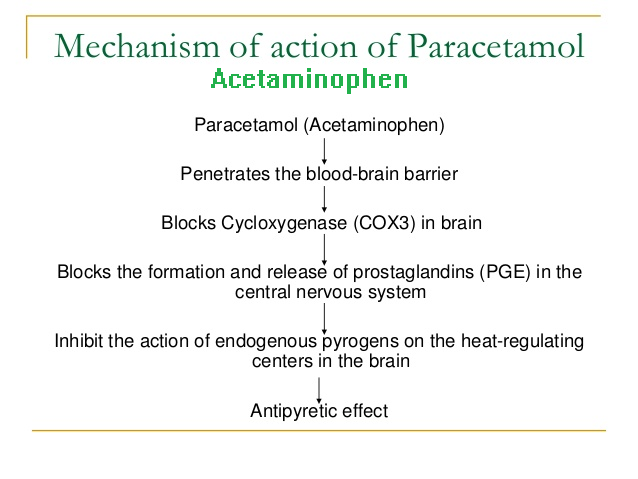
Causes of Acetaminophen Overdose
In adults
The overwhelming majority of the time, acetaminophen is taken safely and according to the directions. Some common reasons that people may accidentally take more than the recommended daily dose of acetaminophen include:
- taking the next dose too soon
- using multiple medicines that contain acetaminophen at the same time
- taking too much at one time
People can also take several drugs that contain acetaminophen without even knowing it. For example, you may take a daily prescription medicine that contains acetaminophen. If you get sick, you may reach for an OTC cold medicine. However, many cold medications also have acetaminophen. Taking both drugs in the same day may lead to unintentionally taking more than the maximum daily dose. Poison Control recommends that you tell your healthcare provider about all prescription and OTC medicines that you’re taking to make sure that you aren’t taking too much acetaminophen. For a list of common medicines that contain acetaminophen, visit KnowYourDose.org.
You should talk to a healthcare provider before taking acetaminophen if you have three or more alcoholic drinks every day. Together, acetaminophen and alcohol increase the chance of overdose and liver damage.
In children
Children may also unintentionally take more acetaminophen than recommended by taking too much at once or taking more than one product with acetaminophen.
Other factors can also increase the chance of overdose in children. For example, a parent may give their child a dose of acetaminophen without realizing that the babysitter recently did the same. Plus, it’s possible to measure the liquid form of acetaminophen incorrectly and give too large of a dose. Children may also mistake acetaminophen for candy or juice and accidentally ingest it.
How to Prevent Acetaminophen Overdose ?
In children
Don’t give your child medication that contains acetaminophen unless it’s necessary for their pain or fever.
Ask your child’s healthcare provider how much acetaminophen you should use, especially if your child is younger than 2 years old.
Use your child’s weight to guide how much you give. Dosage based on their weight is more accurate than dosage based on their age. Measure liquid acetaminophen using the dosing device that comes with the medicine. Never use a regular teaspoon. Regular spoons vary in size and won’t give an accurate dose.
For adults
Always read and follow the label. Never take more medicine than the label says. Doing so is an overdose and can lead to liver damage. If you have pain that isn’t relieved by the maximum dose, do not take more acetaminophen. Instead, talk to your healthcare provider. You may need a different medicine or treatment. Acetaminophen is only for mild to moderate pain.
Also known as…
- On prescription medicine labels, acetaminophen is sometimes listed as APAP, acetam, or other shortened versions of the word. Outside of the United States, it may be called paracetamol.
Know if your medications contain acetaminophen. Check the active ingredients listed on the labels of all your medications. On over-the-counter drug labels, the word “acetaminophen” is written on the front of the package or bottle. It’s also highlighted or bolded in the active ingredient section of the Drug Facts label.
Take only one medication at a time that contains acetaminophen. Tell your healthcare provider about all prescription and OTC drugs that you’re taking to make sure you aren’t taking too much acetaminophen. Ask your healthcare provider or pharmacist if you have questions about dosing instructions or medicines that contain acetaminophen.
Also, talk to your healthcare provider before taking acetaminophen if you:
- drink three or more alcoholic drinks per day
- have liver disease
- take warfarin
You may be at greater risk of liver damage.
How to Treat Acetaminophen Overdose ?
Treating acetaminophen overdose, also known as acetaminophen toxicity, is a critical medical emergency. The following is a detailed overview of the steps involved in treating acetaminophen overdose:
- Early Recognition: It’s essential to recognize the signs and symptoms of acetaminophen overdose as early as possible. Symptoms may include nausea, vomiting, abdominal pain, loss of appetite, confusion, jaundice (yellowing of the skin and eyes), and dark urine. These symptoms can develop within hours to days after ingestion.
- Seek Immediate Medical Attention: If you suspect an acetaminophen overdose, call 911 or your local emergency number immediately. Time is crucial in managing acetaminophen toxicity.
- Decontamination: If the overdose occurred recently (within one to two hours), healthcare providers may consider measures to limit further absorption of acetaminophen:
- Activated Charcoal: Administering activated charcoal can help absorb the remaining acetaminophen in the stomach and prevent its absorption into the bloodstream.
- Treatment in a Healthcare Setting: Once the patient reaches a healthcare facility, the following steps are typically taken:
- Assessment: Healthcare providers will assess the severity of the overdose, including the timing of ingestion and the estimated amount of acetaminophen consumed.
- N-Acetylcysteine (NAC) Therapy: NAC is the antidote for acetaminophen overdose. It works by replenishing depleted glutathione, a natural antioxidant in the body that helps protect the liver from acetaminophen’s toxic metabolites. NAC is typically administered intravenously (IV) or orally, depending on the severity of the overdose and the patient’s condition.
- IV NAC: This is the preferred method for severe overdoses or when the patient is unable to take medications orally. It involves administering NAC through an IV line.
- Oral NAC: For less severe cases, NAC may be given orally as a solution or in tablet form. It is generally less effective than IV NAC but still beneficial when administered within the appropriate timeframe.
- Monitoring: Patients with acetaminophen overdose will be closely monitored, including frequent assessments of liver function, kidney function, and blood clotting parameters. This monitoring helps healthcare providers adjust the NAC treatment as needed.
- Supportive Care: Supportive measures may include intravenous fluids to maintain hydration and medications to manage symptoms like nausea and pain.
- Additional Treatment: In severe cases of acetaminophen overdose, when liver damage is extensive or when there are complications such as hepatic encephalopathy (brain dysfunction due to liver failure), additional interventions may be required, such as liver transplantation.
- Follow-Up Care: After initial treatment, patients are often advised to follow up with healthcare providers for continued monitoring of liver function and overall health. This follow-up care is crucial to ensure complete recovery and to address any potential long-term effects of the overdose.
It’s important to emphasize that acetaminophen overdose can have severe and life-threatening consequences, including liver failure. Timely recognition, prompt medical intervention, and the administration of NAC are key factors in preventing or mitigating liver damage associated with acetaminophen overdose. If you suspect an overdose, seek immediate medical help without delay.
Pain Medications, Pain Relief, and Pain Management
